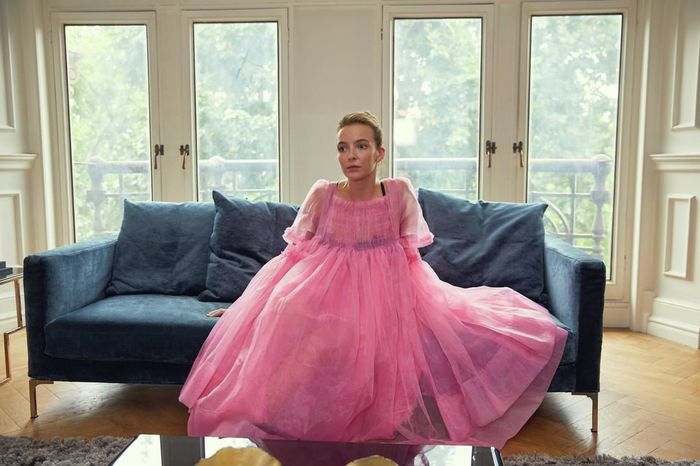A Short History of Fashion in Film
Tiffany Tsoi talks about the constant dialogue between fashion and film.
When Coco Chanel was tabled a million-dollar contract to design for MGM by Samuel Goldwyn in 1931, she had initial hesitations. Although she would later accept the offer, designing film costumes was uncharted territory, and not one she was particularly interested in exploring. At the time, fashion shown in film was seen as a theatrical caricature of actual couture, the key word being costumes. However, Goldwyn was convinced that “women went to movies to see how other women dressed”. He believed strongly in the role of fashion in film.
Chanel’s brief flirtation with the silver screen ended quickly, due to creative differences. The subtlety of her chic aesthetic was lost on moviegoers, and couturists found the fashion of Hollywood garish and unsophisticated. Still, the groundwork had been laid. Two decades later, the worlds of film and fashion married once more in the form of Givenchy’s designs for Audrey Hepburn, this time to much wider acclaim. Hepburn’s sleeveless black gown in Breakfast at Tiffany’s, with its distinctive rear-cut décolleté, along with Givenchy’s designs in seven other movies, instated the little black dress as an indispensable item of every woman’s wardrobe and Audrey Hepburn a global fashion icon.
Yet as film and fashion evolved, audiences looked to cinema and couture increasingly less for fantasy, but something that resonated more deeply with their realities. Accessibility and democratization became important- by the 70s and 80s, fashion was about what people could actually put in their closets, rather than what they dreamt of doing. The suits from Tarantino’s Reservoir Dogs (1992) made lounge attire cool, and established the narrow black suit/white shirt/black tie combo as a staple in men’s fashion. Cheaply bought or thrifted, the suits shown in the film were easily recreated by department stores worldwide. It’s unlikely that this was ever Tarantino’s intention, but he has since been credited for creating the “the modern male answer to the Little Black Dress.”
Today, the relationship between cinema and fashion is more mutualistic; just as film influences couture, designers contribute to movies, showcasing their latest creations. Take The Staggering Girl (2019), a short film produced collaboratively with Valentino’s creative director, Pierpaolo Piccioli. Envision a world dressed entirely in Valentino- rich in frothy tulle, billowing gowns, and ruffling colour. The costuming was sublime, indeed, but failed to compensate for a flimsy script and fragmented storytelling. Critics scorned the film for being a 35 minute long promotion reel for Valentino’s haute couture collection, and one reviewer deemed it “as close to pure commercialism as cinema can get without fitting into the MCU”.
One can’t help but to feel that if this is the inevitable product of growing involvement of couture in film, then fashion may be best left on the runway. In a world that is becoming increasingly commercial, the desire to safeguard our art has never been stronger. But to shun the importance of fashion in film is to overlook the art of costume design entirely. The entwinement of film and fashion is so valuable, and necessary, because of the intrinsic power in both artforms to tell a story. The Great Gatsby, for example, won the 2014 Academy Award in Costume Design, not for its prestigious collaborations with Prada or Brooks Brothers or Tiffany, but its ability to immerse viewers into the luxury and grandeur of the roaring twenties. Designer Catherine Martin was instructed to use the 1920s as a sartorial reference, but also to modernise the clothing in a way which would present New York through the lens of Fitzgerald’s- as an era of revolutionary social and sexual change. And that’s exactly the kind of feeling the extravagant dresses and suits of The Great Gatsby evoke- never nostalgic, or dated, but dazzling and electrifying. As Baz Luhrmann put it: “what it must have felt like to hear jazz for the first time.”
The purpose of fashion, be it on the runway, in a movie, or on the street, rarely changes. To communicate, express, and to reinvent; it’s what makes costuming a cornerstone of filmmaking. In anticipation of The Great Gatsby’s release, Marc Jacobs, Ralph Lauren, and Marchesa featured 1920s inspired flapper dresses and beaded gowns in their 2012 collection. Stars among the likes of Zoe Saldana and Katy Perry showed up to red carpets dressed in that same frock. Catherine Martin wasn’t aiming to influence haute couture, but it’s what happens as a byproduct of excellent costume design. In the same way that film borrows from the runway, fashion will continue to serve cinema. Occasionally the line of product placement may be toed- but we can probably accommodate for that.
 News / Clare Hall spent over £500k opposing busway 24 December 2025
News / Clare Hall spent over £500k opposing busway 24 December 2025 Comment / The ‘class’ of Cambridge24 December 2025
Comment / The ‘class’ of Cambridge24 December 2025 News / Caius mourns its tree-mendous loss23 December 2025
News / Caius mourns its tree-mendous loss23 December 2025 Comment / League tables do more harm than good26 December 2025
Comment / League tables do more harm than good26 December 2025 News / Girton JCR publishes open letter expressing solidarity with Palestine25 December 2025
News / Girton JCR publishes open letter expressing solidarity with Palestine25 December 2025









